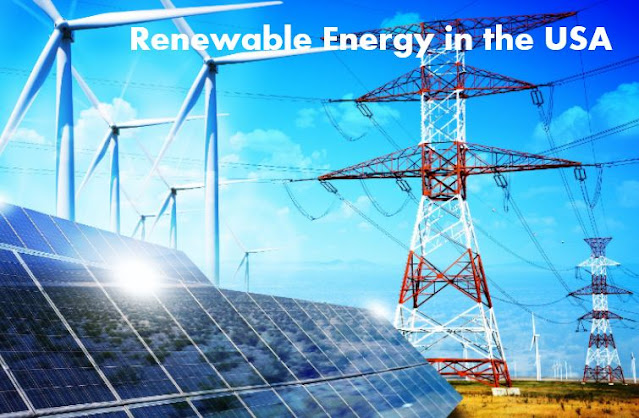
Renewable Energy In United States of Amerika
The United States is a federal republic located in North America, consisting of 50 states, a federal district, and several territories. It is the third-largest country in the world by population, with over 330 million people.
The country has a diverse geography, ranging from the Appalachian Mountains in the east to the Rocky Mountains in the west, and from the frozen tundras of Alaska to the sunny beaches of Hawaii. The country is bordered by Canada to the north, Mexico to the south, and the Atlantic and Pacific Oceans to the east and west, respectively.
The United States is known for its rich history, having been colonized by European powers in the 16th and 17th centuries before gaining independence from Great Britain in 1776. The country has played a significant role in global events such as World War I and II, and has been a superpower in the post-war era.
The United States is a diverse and multicultural country, with a large immigrant population from all over the world. It is home to many famous landmarks, such as the Statue of Liberty, the Golden Gate Bridge, and Mount Rushmore. The country is also known for its iconic institutions, such as Hollywood, the Ivy League universities, and the Smithsonian museums.
The United States is a global economic power, with the world’s largest economy in terms of gross domestic product (GDP). It is also home to many of the world’s largest corporations and is a leader in technological innovation.
The government of the United States is a federal republic with a presidential system. The country has a complex system of checks and balances between its three branches of government – the executive, legislative, and judicial – which is designed to ensure that no one branch of government has too much power.
Overall, the United States is a vast and diverse country with a rich history and culture, and is known for its economic and political power on the world stage.
The United States’ Vision of Renewable Energy
The United States’ vision of renewable energy is centered around the transition to a cleaner, more sustainable energy system that reduces the country’s dependence on fossil fuels, mitigates climate change, and creates new jobs and economic opportunities.
The country has set ambitious goals to increase the use of renewable energy sources such as wind, solar, geothermal, and hydropower, and to reduce greenhouse gas emissions in order to address the urgent challenge of climate change. In 2021, the Biden administration announced a goal to achieve a carbon-free power sector by 2035, and to achieve a net-zero economy-wide emissions target by 2050.
To achieve these goals, the country is investing in research and development, incentivizing the deployment of renewable energy technologies, and encouraging innovation in the private sector. There are also various tax credits, subsidies, and grants available to individuals and businesses that invest in renewable energy projects, such as installing solar panels on rooftops or developing wind farms.
The United States’ vision of renewable energy also emphasizes the need to ensure that the benefits of the transition to a clean energy economy are shared equitably, and that communities that have historically been impacted by fossil fuel extraction and pollution are not left behind.
Implementation of Renewable Energy in the United States government
The United States government has implemented several policies and programs to promote the development and use of renewable energy in the country.
Here are some examples:
Renewable Portfolio Standards (RPS): Some states in the United States have adopted RPS policies that require utilities to generate a certain percentage of their electricity from renewable energy sources. This has helped to increase the demand for renewable energy and incentivize the development of new renewable energy projects.
Investment Tax Credits (ITC): The federal government has offered ITCs for solar, wind, and other renewable energy projects. The ITC reduces the tax liability of individuals and businesses that invest in renewable energy, making it more attractive to invest in these projects.
Department of Energy (DOE) programs: The DOE has several programs that provide funding and technical assistance to promote the development of renewable energy. For example, the SunShot Initiative is aimed at reducing the cost of solar energy, and the Wind Energy Technologies Office supports research and development of wind energy.
Environmental Protection Agency (EPA) regulations: The EPA has implemented regulations such as the Clean Power Plan, which sets targets for reducing carbon emissions from power plants. This has incentivized utilities to shift towards renewable energy sources to meet these targets.
Department of Defense (DOD) initiatives: The DOD has implemented initiatives to increase the use of renewable energy on military bases and reduce the military’s dependence on fossil fuels. This has helped to increase the demand for renewable energy and drive down costs.
The United States government has implemented a range of policies and programs to promote the development and use of renewable energy in the country. While progress has been made, there is still a long way to go to achieve the goal of a carbon-free power sector by 2035 and a net-zero economy-wide emissions target by 2050.
United States Nett Zero Carbon Target
In January 2021, President Joe Biden signed an executive order to rejoin the Paris Agreement on climate change, which commits the United States to reaching net-zero greenhouse gas emissions by 2050. This is a significant commitment, as the United States is one of the world’s largest emitters of greenhouse gases and its participation in global climate efforts is critical to addressing the global climate crisis.
Achieving net-zero emissions by 2050 will require a significant and rapid transformation of the United States’ energy system. To achieve this goal, the Biden administration has proposed a range of measures to accelerate the deployment of renewable energy, increase energy efficiency, and reduce emissions in the transportation and building sectors.
Some of the key measures proposed by the administration include:
Investing in clean energy research, development, and deployment to drive innovation and reduce the cost of renewable energy technologies.
Establishing a national clean energy standard to require a certain percentage of electricity to come from renewable sources.
Promoting energy efficiency in buildings through incentives and standards for new and existing construction.
Supporting the adoption of electric vehicles through incentives and investments in charging infrastructure.
Accelerating the deployment of carbon capture and storage technologies to reduce emissions from fossil fuel power plants.
The Biden administration has also pledged to make environmental justice a key part of its climate policy, recognizing that communities of color and low-income communities are disproportionately impacted by climate change and environmental pollution.
The United States’ commitment to achieving net-zero emissions by 2050 is a critical step towards addressing the global climate crisis. However, achieving this goal will require sustained effort and investment from both the public and private sectors, as well as continued innovation and collaboration across industries and communities.
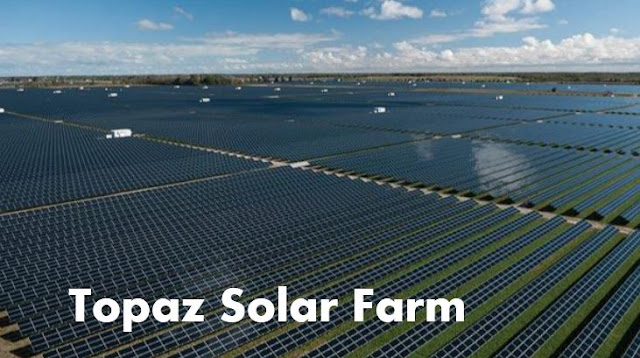
Solar Energy Project in the United States
There are many solar energy projects in the United States, ranging from small residential installations to large utility-scale projects.
Here are a few examples of notable solar energy projects in the country:
Solar Star: The Solar Star project in California is one of the largest solar energy projects in the world, with a capacity of 579 megawatts (MW). The project consists of two sites, each with over 1.7 million solar panels.
Topaz Solar Farm: The Topaz Solar Farm in California has a capacity of 550 MW and is one of the largest solar energy projects in the world. The project consists of over 9 million solar panels spread across 9.5 square miles.
Ivanpah Solar Electric Generating System: The Ivanpah Solar Electric Generating System in California is a concentrated solar power (CSP) project with a capacity of 392 MW. The project uses mirrors to concentrate sunlight onto boilers, which generate steam that drives turbines to generate electricity.
SolarReserve Crescent Dunes: The SolarReserve Crescent Dunes project in Nevada is a CSP project with a capacity of 110 MW. The project uses molten salt to store thermal energy, allowing it to generate electricity even when the sun is not shining.
Brooklyn Microgrid: The Brooklyn Microgrid is a community-based solar energy project that allows residents of Brooklyn, New York to buy and sell solar energy within their community. The project consists of rooftop solar panels installed on homes and businesses throughout the community.
There are many solar energy projects in the United States, ranging from large utility-scale projects to community-based initiatives. These projects are helping to drive the transition to a cleaner, more sustainable energy system and create new jobs and economic opportunities.
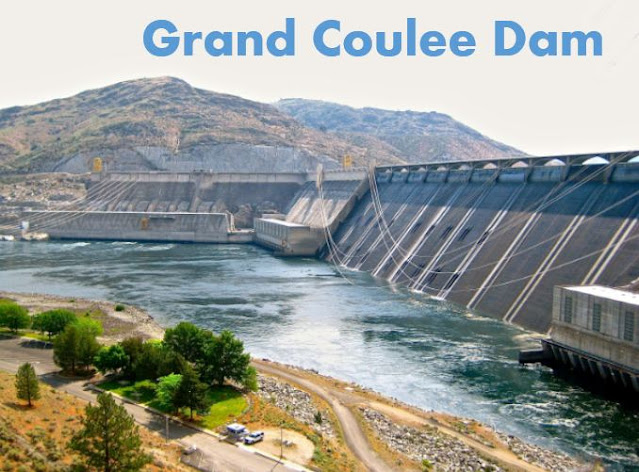
Hydro Energy Project in the United States
Hydro energy is an important source of renewable energy in the United States, and there are many hydro energy projects across the country.
Here are a few examples:
Grand Coulee Dam: The Grand Coulee Dam, located on the Columbia River in Washington state, is the largest hydroelectric power station in the United States, with a capacity of 6,809 MW. The dam generates over 21 billion kilowatt-hours (kWh) of electricity each year.
Hoover Dam: The Hoover Dam, located on the Colorado River on the border between Arizona and Nevada, has a capacity of 2,080 MW. The dam generates over 4 billion kWh of electricity each year.
Glen Canyon Dam: The Glen Canyon Dam, also located on the Colorado River in Arizona, has a capacity of 1,312 MW. The dam generates over 4 billion kWh of electricity each year.
Bonneville Dam: The Bonneville Dam, located on the Columbia River in Oregon and Washington, has a capacity of 1,080 MW. The dam generates over 8 billion kWh of electricity each year.
Niagara Falls: The Niagara Falls hydroelectric power plants, located on the Niagara River in New York and Ontario, Canada, have a combined capacity of 4.4 GW. The plants generate over 21 billion kWh of electricity each year.
Hydro energy is an important source of renewable energy in the United States, and there are many hydro energy projects across the country. These projects provide clean, renewable energy to millions of homes and businesses, and help to reduce greenhouse gas emissions and combat climate change.
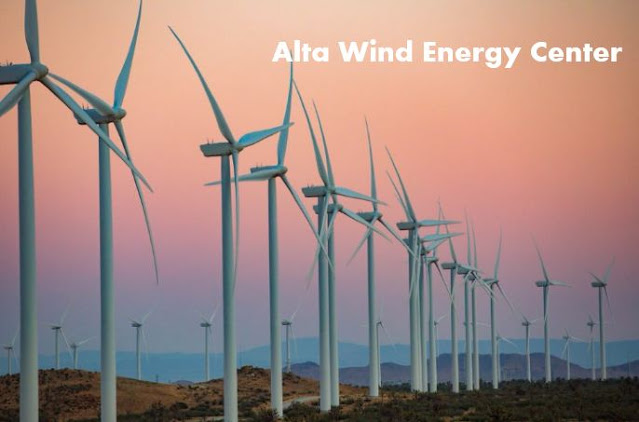
Wind Energy Project in the United States
Wind energy is a rapidly growing source of renewable energy in the United States, and there are many wind energy projects across the country.
Here are a few examples:
Alta Wind Energy Center: The Alta Wind Energy Center, located in California, is one of the largest wind energy projects in the United States, with a capacity of 1,550 MW. The project consists of 586 wind turbines spread across several sites.
Shepherds Flat Wind Farm: The Shepherds Flat Wind Farm, located in Oregon, has a capacity of 845 MW and is one of the largest wind energy projects in the world. The project consists of 338 wind turbines spread across 30 square miles.
Roscoe Wind Farm: The Roscoe Wind Farm, located in Texas, has a capacity of 781.5 MW and was the largest wind energy project in the world when it was completed in 2009. The project consists of 627 wind turbines spread across 100,000 acres.
Horse Hollow Wind Energy Center: The Horse Hollow Wind Energy Center, also located in Texas, has a capacity of 735 MW and is one of the largest wind energy projects in the United States. The project consists of 421 wind turbines spread across 47,000 acres.
Block Island Wind Farm: The Block Island Wind Farm, located off the coast of Rhode Island, has a capacity of 30 MW and was the first offshore wind energy project in the United States. The project consists of five wind turbines that generate enough electricity to power over 17,000 homes.
Wind energy is a rapidly growing source of renewable energy in the United States, and there are many wind energy projects across the country. These projects provide clean, renewable energy to millions of homes and businesses, and help to reduce greenhouse gas emissions and combat climate change.

Geothermal Energy Project in the United States
Geothermal energy is a significant source of renewable energy in the United States, and there are several geothermal energy projects across the country.
Here are a few examples:
The Geysers: The Geysers, located in California, is the largest geothermal energy project in the world with a capacity of 1.5 GW. The project consists of 22 power plants that generate electricity using steam from more than 350 geothermal wells.
Salton Sea: The Salton Sea geothermal project, located in California, has a capacity of 340 MW. The project consists of 10 power plants that generate electricity using steam from more than 100 geothermal wells.
Nevada Geothermal Power: The Nevada Geothermal Power project, located in Nevada, has a capacity of 69 MW. The project consists of two power plants that generate electricity using steam from geothermal wells.
Raft River: The Raft River geothermal project, located in Idaho, has a capacity of 10.5 MW. The project consists of a single power plant that generates electricity using steam from geothermal wells.
Chena Hot Springs: The Chena Hot Springs geothermal project, located in Alaska, has a capacity of 440 kW. The project consists of a single power plant that generates electricity using steam from a geothermal well.
Geothermal energy is an important source of renewable energy in the United States, and there are several geothermal energy projects across the country. These projects provide clean, renewable energy to homes and businesses and help to reduce greenhouse gas emissions and combat climate change.

Bio mass energy Project in the United States
Biomass energy is a significant source of renewable energy in the United States, and there are several biomass energy projects across the country.
Here are a few examples:
Drax Power Station: The Drax Power Station, located in Mississippi, is one of the largest biomass energy projects in the world with a capacity of 3.9 GW. The project consists of six biomass-fired power plants that generate electricity using wood pellets.
Dominion Energy: Dominion Energy, located in Virginia, operates several biomass energy projects with a combined capacity of 163 MW. These projects generate electricity using wood waste, agricultural waste, and other biomass materials.
Amager Bakke: Amager Bakke, located in Massachusetts, is a biomass energy project that generates electricity and heat from waste materials. The project consists of a waste-to-energy plant that burns municipal waste to generate electricity.
Blue Lake Power: Blue Lake Power, located in California, is a biomass energy project that generates electricity using wood waste. The project has a capacity of 12 MW and provides renewable energy to homes and businesses in the area.
New Hope Power Company: The New Hope Power Company, located in Florida, is a biomass energy project that generates electricity using wood waste. The project has a capacity of 140 MW and provides renewable energy to homes and businesses in the area.
Biomass energy is an important source of renewable energy in the United States, and there are several biomass energy projects across the country. These projects provide clean, renewable energy while also helping to reduce waste and support sustainable forestry practices.
How to utilize renewable energy in the transportation sector in the United States
The transportation sector is a significant contributor to greenhouse gas emissions in the United States. However, there are several ways to utilize renewable energy in this sector.
Here are some examples:
Electric vehicles (EVs): The most direct way to utilize renewable energy in the transportation sector is by using EVs. EVs are powered by electricity, which can be generated from renewable sources such as wind, solar, or hydropower. EVs are becoming increasingly popular in the United States, and many car manufacturers now offer electric models.
Biofuels: Biofuels, such as ethanol and biodiesel, are renewable fuels made from organic matter. They can be used in conventional gasoline or diesel engines without modification. Biofuels can be produced from various sources, including agricultural crops, waste biomass, and algae.
Hydrogen fuel cells: Hydrogen fuel cells convert hydrogen into electricity, which can be used to power vehicles. Hydrogen can be produced from renewable sources such as wind or solar power, and when used in fuel cells, it produces no emissions, only water.
Solar-powered charging stations: Solar-powered charging stations can be installed along highways, in parking lots, or other locations to charge EVs with renewable energy.
Public transportation: Public transportation systems, such as buses and trains, can be powered by renewable energy sources such as electricity or biofuels.
Utilizing renewable energy in the transportation sector can significantly reduce greenhouse gas emissions and promote a cleaner and more sustainable future. The United States government has implemented policies to support the development of renewable energy in transportation, such as tax incentives for EVs and biofuel production, and funding for research and development of new renewable energy technologies.

Implementation of Renewable Energy in the tourism sector in the United States
The tourism sector in the United States is increasingly implementing renewable energy initiatives to reduce its environmental impact and promote sustainability.
Here are some examples of renewable energy implementation in the tourism sector:
Solar power: Many hotels, resorts, and tourist attractions have installed solar panels to generate renewable energy. For example, Walt Disney World Resort in Florida has installed over 500,000 solar panels to generate renewable energy and reduce its carbon footprint.
Energy efficiency: The tourism sector is also implementing energy efficiency measures to reduce energy consumption and costs. These measures include upgrading lighting systems, installing energy-efficient HVAC systems, and using advanced energy management systems.
Geothermal power: Some tourist destinations have implemented geothermal energy projects to provide heating and cooling for their facilities. For example, the Chena Hot Springs Resort in Alaska uses geothermal energy to provide hot water for its pools and heating for its facilities.
Wind power: Some tourist destinations, such as Cape Cod, Massachusetts, have implemented wind power projects to generate renewable energy.
Electric vehicles: Some tourist destinations are also using electric vehicles for transportation, such as shuttle buses or rental cars. This not only reduces carbon emissions but also provides a unique and sustainable travel experience for visitors.
The tourism sector in the United States is recognizing the importance of implementing renewable energy initiatives to reduce its environmental impact, enhance sustainability, and provide a unique and sustainable travel experience for visitors. By doing so, the tourism sector can lead the way towards a cleaner, more sustainable energy future.
Companies that contribute greatly to the implementation of renewable energy in the United States
There are many companies that have contributed greatly to the implementation of renewable energy in the United States.
Here are a few examples:
Tesla: Tesla is a leading electric vehicle manufacturer and has also made significant contributions to renewable energy through its production of solar panels, solar roofs, and battery storage solutions. The company’s Gigafactory in Nevada is one of the largest facilities for producing batteries for electric vehicles and energy storage systems.
NextEra Energy: NextEra Energy is a leading renewable energy company in the United States and operates the largest fleet of wind and solar projects in North America. The company has been instrumental in developing new renewable energy projects and expanding the use of renewable energy across the country.
Duke Energy: Duke Energy is one of the largest utilities in the United States and has set ambitious goals to transition to a cleaner energy system. The company plans to invest $56 billion in renewable energy and grid modernization over the next decade.
Amazon: Amazon has made significant investments in renewable energy, including signing power purchase agreements (PPAs) for wind and solar projects that will provide the company with renewable energy to power its operations. In 2019, Amazon announced its commitment to be carbon neutral by 2040.
Google: Google has also made significant investments in renewable energy, including purchasing renewable energy certificates (RECs) and signing PPAs for wind and solar projects. The company has also invested in research and development of new renewable energy technologies.
There are many companies in the United States that are making significant contributions to the implementation of renewable energy. These companies are playing a critical role in driving down the cost of renewable energy and accelerating the transition to a cleaner, more sustainable energy system.
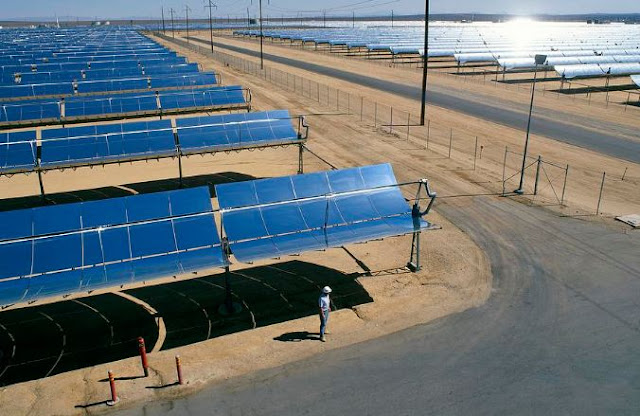
The largest Renewable Energy Project in the United States
The largest renewable energy project in the United States is the Solar Energy Generating Systems (SEGS) located in California. SEGS is a series of nine solar thermal power plants located in the Mojave Desert, which collectively generate a total of 354 megawatts (MW) of electricity, enough to power over 200,000 homes.
The SEGS project was built in the 1980s and 1990s, and at the time of its construction, it was the largest solar power project in the world. The project consists of over 1.2 million mirrors, known as heliostats, which reflect sunlight onto a receiver that contains a heat transfer fluid. The fluid is heated by the concentrated sunlight, and the resulting steam drives turbines that generate electricity.
SEGS was built by Luz Industries, a company that was later acquired by the energy company, FPL Energy. The project has been in operation for over 30 years and has provided a reliable source of renewable energy to Southern California Edison, the utility that purchases the electricity generated by SEGS.
In recent years, other large-scale renewable energy projects have been developed in the United States, such as the Alta Wind Energy Center in California, which is the largest wind farm in the country with a total capacity of 1,550 MW, and the Ivanpah Solar Electric Generating System in California, which is a 392 MW solar thermal power plant. However, SEGS remains the largest renewable energy project in the United States in terms of installed capacity.

What is the composition of renewable energy in the overall energy sector in the United States
Renewable energy has been growing in importance in the United States, but it still accounts for a relatively small share of the overall energy sector. According to the U.S. Energy Information Administration (EIA), in 2020, renewable energy sources accounted for about 12% of total U.S. energy consumption and about 20% of electricity generation.
Breaking down the composition of renewable energy in the United States, the largest sources of renewable energy in 2020 were:
Hydroelectric power: Hydroelectric power accounted for about 6% of total U.S. energy consumption and about 7% of electricity generation. Hydroelectric power is generated from flowing water, usually in dams.
Wind power: Wind power accounted for about 2.8% of total U.S. energy consumption and about 8% of electricity generation. Wind power is generated from the kinetic energy of wind turbines.
Biomass: Biomass, including wood, biofuels, and waste, accounted for about 4% of total U.S. energy consumption and about 1% of electricity generation.
Solar power: Solar power accounted for about 1% of total U.S. energy consumption and about 3% of electricity generation. Solar power is generated from photovoltaic panels that convert sunlight into electricity.
Other renewable energy sources, such as geothermal and tidal power, accounted for a very small percentage of total U.S. energy consumption.
It is worth noting that the share of renewable energy in the United States’ energy mix has been growing steadily in recent years, and the government has set targets to increase the use of renewable energy further.
Conclusions on the implementation of renewable energy in the United States
The United States has made significant progress in implementing renewable energy in recent years. There has been a growing awareness of the importance of transitioning to a cleaner and more sustainable energy system, and the government has implemented various policies to support the development and deployment of renewable energy technologies.
Some of the key developments in the implementation of renewable energy in the United States include:
Significant growth in renewable energy capacity and generation, with renewable energy sources accounting for about 12% of total U.S. energy consumption and about 20% of electricity generation in 2020.
Major investments in renewable energy by both the public and private sectors, including the Department of Defense and leading corporations such as Google and Apple.
The implementation of policies such as tax incentives, renewable portfolio standards, and funding for research and development to support the growth of renewable energy.
The adoption of innovative renewable energy technologies such as wind, solar, and hydroelectric power, as well as emerging technologies such as geothermal and tidal power.
Despite these positive developments, there are still challenges to the widespread implementation of renewable energy in the United States. These include issues related to grid integration, energy storage, and the availability of financing for renewable energy projects. However, with continued investment, innovation, and policy support, the United States can continue to make progress towards a more sustainable and clean energy future.
https://www.exaputra.com/2023/04/implementation-of-renewable-energy-in.html
Renewable Energy
Has the Fever Broken?
 Many Americans are starting to feel like the lady whose observations we see at left.
Many Americans are starting to feel like the lady whose observations we see at left.
Exactly how this moves forward from here is anyone’s guess. Maybe the Democrats gain a huge majority in Congress in 2026 and then impeach and convict Trump–perhaps joined by lots of Republicans.
There are plenty of different scenarios.
Renewable Energy
Trump and Climate Change
 As shown in this short video, Donald Trump says that climate change is the biggest con job ever perpetrated on Earth.
As shown in this short video, Donald Trump says that climate change is the biggest con job ever perpetrated on Earth.
We are to believe that Trump a) understands the subject better than the thousands of our planet’s top scientists, located in countries all around the globe, and b) he’s telling the truth, where they have somehow gotten together and conspired to lie.
That’s quite a stretch.
Renewable Energy
Can You Stack VEU with Solar or Other Incentives? – Find Out
-
Climate Change3 months ago
Guest post: Why China is still building new coal – and when it might stop
-
Climate Change2 years ago
Spanish-language misinformation on renewable energy spreads online, report shows
-
Greenhouse Gases3 months ago
Guest post: Why China is still building new coal – and when it might stop
-

 Greenhouse Gases1 year ago
Greenhouse Gases1 year ago嘉宾来稿:满足中国增长的用电需求 光伏加储能“比新建煤电更实惠”
-
Climate Change Videos2 years ago
The toxic gas flares fuelling Nigeria’s climate change – BBC News
-

 Climate Change1 year ago
Climate Change1 year ago嘉宾来稿:满足中国增长的用电需求 光伏加储能“比新建煤电更实惠”
-

 Carbon Footprint2 years ago
Carbon Footprint2 years agoUS SEC’s Climate Disclosure Rules Spur Renewed Interest in Carbon Credits
-
Renewable Energy4 months ago
US Grid Strain, Possible Allete Sale
















